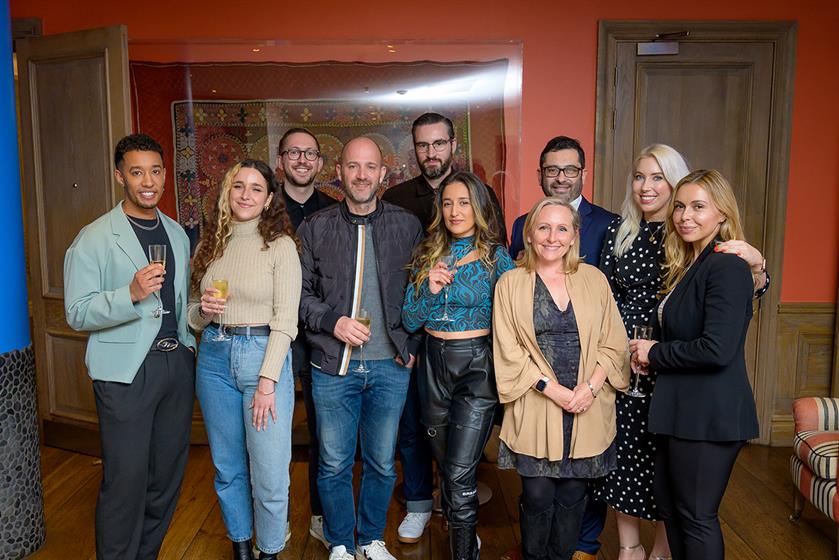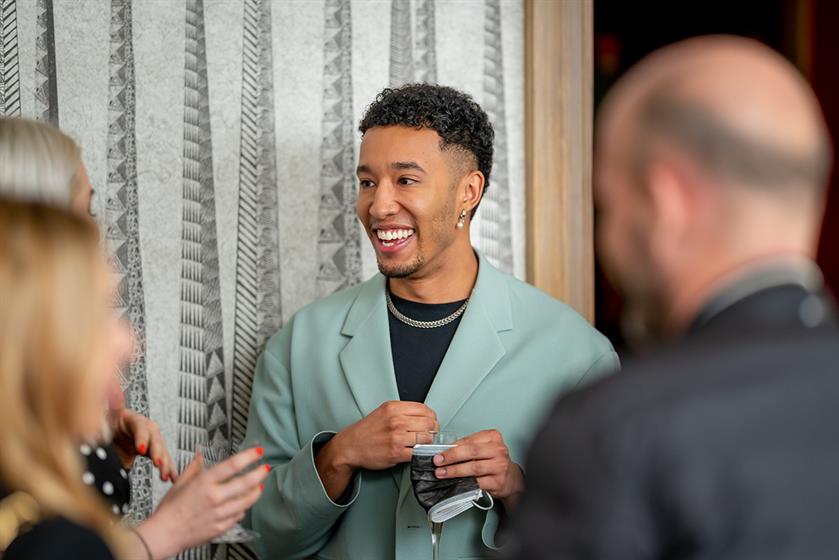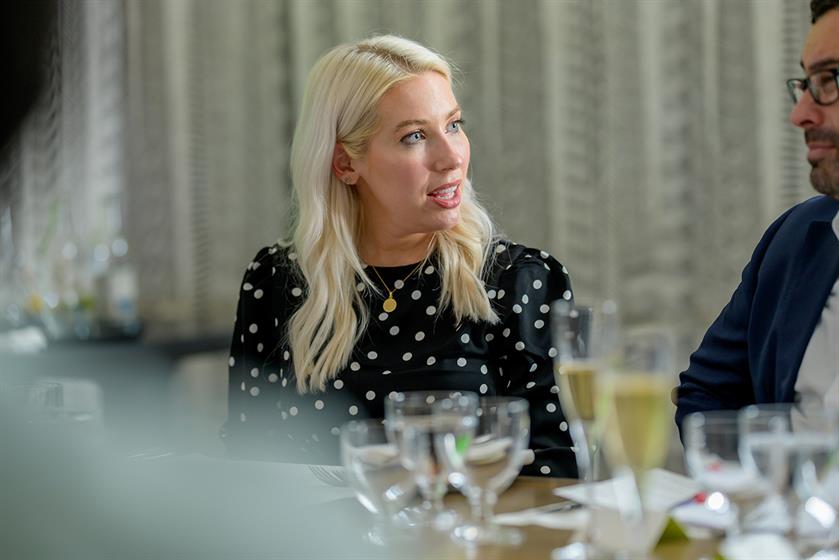Brands meet creators: Campaign and Whalar hosted a "share and learn" dinner*
Commanding attention in 2022 is not as straightforward as it used to be. There’s a whole plethora of competing distractions for consumers’ eyeballs and hearts – not least the emergence of influencer marketing stars, with their own audiences, their own ideas, and a sense of their own value.
Creator marketing is undoubtedly a huge opportunity for savvy brands which understand the power of building community and personality but, for some, it’s slightly uncertain, uncharted territory.
There’s enthusiasm from both advertisers and creators to collaborate but still some misunderstanding about methods of working, the skills involved, and how all parties get the best from each other in this new relationship.
As always, communication and sharing experience is key. Campaign partnered with global creator commerce company Whalar to bring together brands keen to embrace influencer marketing and creators who are at the sharp end of delivering innovative content to their audiences.
Campaign media editor Arvind Hickman hosted the London dinner, recognising that creator marketing is a new skill set that brands which want to succeed in the future will have to master. And that soaking up creator expertise in candid conversations is a key way to elevate that learning.
As Becky Owen, head of creator innovation & solutions, creative shop EMEA at Meta, says: creator marketing is a skill, not a product.
The time is now
The time is clearly right for more - and more valuable - creator-brand relationships. A one-size-fits-all, broadcast approach is no longer fit for purpose for modern consumers, says Whalar’s chief client officer Emma Harman. “Brands know it and that’s why the creator economy is blooming. It’s vital to create more personalised and relevant touch points. Increasingly, brands are looking for a social and community approach first which is where creators come in. Brands want to know who to work with and how, and we want to help demystify the process.”
Timing is indeed important. Marco Bertozzi, Whalar’s president EMEA, suggests that the creator sector should learn the historic lessons of digital which, having made its pitch on measurability, then struggled to be judged on anything else.
Just so, creator marketing is not all about reach but about building brands. “It took a decade of backtracking to say that you could build brands with digital,” he says. “Brands have always been a part of wider culture and [working with creators] is a fantastic way to do that.”
What creators say
So how can brands skill-up? As simple as it may seem, a big challenge is for brands to properly value the work of creators. That, urges Melissa Freire (@MelyCrisp), a dance and video creator whose work includes campaigns for Sony Linkbuds, is the best way to get the most out of any collaboration.
“Brands should express why they think we are important and give us the freedom to create, and even to change the brief,” she says. “You cannot force creativity.”
In a request that is familiar to agencies everywhere, content creator Pelé Newell (@pelenewell), who has worked with brands such as Converse and Hugo Boss, makes a plea to bring creators in at the briefing stage.
It works wonders, he says. “Bring them in straight away rather than getting the creator to fit around the brief. I was brought in early on Hugo Boss and did the concepts and briefings very quickly.”
Constant learning
In a fast-developing sector, there is naturally a great deal for advertisers to learn. Not least, says MediaCom’s head of influencer marketing Emily Trenouth, on changing notions of reach and the value of micro influencers. “There’s space for everyone and value in working with different influencers,” she points out. “It’s about the relevance to your audience, not the size of the audience.”
Pioneering brands are recognising this and, she notes, investment has shifted from “exploratory” to up to 10% of some multi-million spends. Consequently, more significant budgets call for more integrated thinking. Trenouth predicts that creator content will increasingly escape its ordained channels to appear in traditional above the line settings such as broadcast and outdoor.
According to Meta’s Owen, the days of creator activity being almost completely organic are no longer. The concept that it’s simply a vehicle to “get an audience talking about something” is over. “It’s so much more strategic now because the impact a well-structured creator campaign can deliver has become far greater – from awareness, to app installs, to helping a brand gain cultural relevance."
And the crucial new skills in a marketer’s toolbox include understanding who to work with and how in this burgeoning sector, how best to brief creators, and setting expectations of what it can deliver.
New frontiers
Britvic has recently launched Infused, a new digital strategy and content studio which acts as a digital engine for the business. It allows diversity of content across more channels and performance marketing and optimisation in real-time, significantly enhancing its digital capability. “We recognise that the creator economy plays an important part in our overall business digital acceleration ambitions, and is a priority channel for many of our digital first brands," says Callum Watt, Britvic's head of digital marketing.
Working with carefully selected creators allows Britvic to take a more targeted and smarter approach, “making sure our brands show up in the right places, with the right people, in the most authentic and engaging ways," Watt explains.
"It allows us to create meaningful and memorable cut-through and the agility of the creator economy allows us to test and learn to dig deeper into marketing effectiveness.”
Not all marketers are as comfortable with using creators just yet, but things are changing. Until recently, chief marketing officers looking to quantify creator marketing in the way they would other advertising channels have had to rely on organic engagement as a key measure of success, Owen notes. "But now, the ability to put media spend behind creator assets from their handle on Instagram means brands can run more in-depth analysis to learn what creators perform best, what type of messaging works, what creative concepts deliver and so on. This, in turn, is driving confidence for further investment."
What next?
As creator marketing grows in size, issues around about where budgets, roles and responsibilities lie are surfacing, says Trenouth, and “will probably take three to five years” to shake out.
Cody McKim, FMCG brand partnerships lead at TikTok, is looking ahead to the potential for influencers to develop the underutilised sonic aspects of brands. “Brands can have their own sonic identity, like the crackle of a Walkers crisps bag or the opening of a can of Pepsi.”
McKim’s take on how brands need to use creators successfully over time comes down to a wholehearted and authentic embracing of the story. “The younger generation doesn't want to see a brand that sits on the sidelines,” he explains. “You can’t just do a campaign for Black History Month. You need to embody it in everything you do.”
And Owen points to the sector's inclusivity: brands have the scope to partner with creators that reflect different groups – representing all communities and empowering diversity.
Virtual Influencers are also a fast growing medium, she says. "They have engagement akin to real creators, but it's unique in that we know they are totally fictional characters made by individuals. We are only just at the beginning of understanding synthetic media in the 'influence’ space, but as we head to the metaverse, it’s only going to grow."
Trust, acknowledges Bertozzi in conclusion, is a big issue – trust so that marketing teams can embrace creator marketing but also trust between a brand and a creator, “powering their creative freedom”.
However, for the brave, the opportunity is colossal.
“I love the fact that creating value for a brand is not all about reach any more,” he says. “There is a revolution of creativity and marketing and we will see a tidal wave in this space.”
Catch that wave – or get out of the way.
*Group photo (l to r):
Pelé Newell (@pelenewell), content creator
Deborah Freire, graphic designer
Cody McKim, FMCG brand partnerships lead, TikTok
Marco Bertozzi, president EMEA, Whalar
Callum Watt, head of digital marketing, Britvic
Melissa Freire (@melycrisp), dance and video creator
Emma Harman, chief client officer, Whalar
Arvind Hickman, media editor, Campaign
Becky Owen, head of creator innovation & solutions, Creative Shop, EMEA, Meta
Emily Trenouth, head of influencer marketing, MediaCom UK
Also pictured in photo gallery:
Jamie Gutfreund, CMO, Whalar






